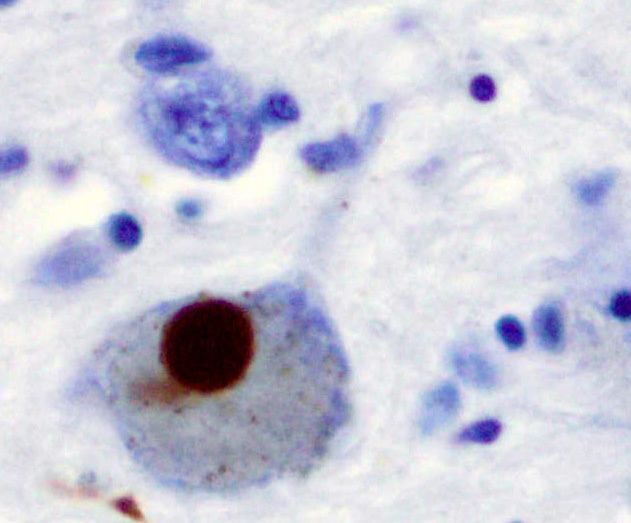 | ||
Synucleinopathies (also called α-Synucleinopathies) are neurodegenerative diseases characterised by the abnormal accumulation of aggregates of alpha-synuclein protein in neurons, nerve fibres or glial cells. One prevailing hypothesis has been that the death of dopaminergic cells is the proximate cause of functional deficits. However, introduction of exogenous α-SYN in a rodent animal model has been shown to induce functional deficits preceding cell death.
There are three main types of synucleinopathy: Parkinson's disease, dementia with Lewy bodies, and multiple system atrophy. Other rare disorders, such as various neuroaxonal dystrophies, also have α-synuclein pathologies.
Because each of the synucleinopathies has a distinct set of symptoms, prognosis and management issues, it has been suggested that the term "has little practical value as a diagnostic term for the clinician."
Synucleinopathies can sometimes overlap with tauopathies, possibly because of interaction between the synuclein and tau proteins.
